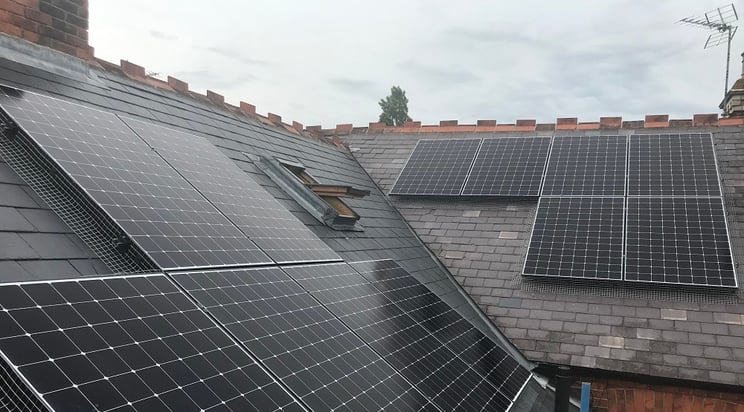For those who have their finger on the pulse of the solar energy market, it's becoming obvious that there is an increasing shift towards the manufacture and use of n-type solar from p-type panels in both commercial and domestic settings, to the point where the former now dominate. But why has this shift come about, and more fundamentally what is the difference between the two?
What is the Difference Between P-Type and N-Type Solar Panels?
The difference between p-type and n-type solar panels is down to a small variation in construction. In p-type solar panels, it is the emitter layer of the silicon panel that is dipped in phosphorous rather than boron, so it becomes the positively charged, while the bulk crystalline silicon layer is dipped in boron so it becomes negatively charged. It is this contrast of charges that allows the panels to produce energy from sunlight. The difference in n-type panels is that it is the emitter layer that is coated in boron, and becomes negatively charged while the crystalline silicon layer is coated in phosphorous.

A cross section of a standard p-type solar cell, notice the n-type and p-type silicon layers. In a n-type cell, these layers are reversed.
What Advantages do N-Type Panels Have Over P-Type Panels?
This switching of layers means that the n-type's vital crystalline silicon layer is more protected from the light induced degradation, significantly reducing the loss of efficiency when compared to p-type panels as well as increasing the base efficiency as well, sometimes by as much as 2.1%, so a p-type panel might have a base efficiency of 23.6% but an n-type 25.1%. Additionally, n-type solar panels have significantly less LID (Light induced degradation) and so will have less efficiency loss over the course of their lifespan, some models still capable of 90% efficiency after 25 years, compared to around 80-85% for most p-type panels.
Then Why Are P-Type Panels Historically More Popular?
Because they are far more established. It was when the space race gave rise to the use of solar in practical applications that the p-type became popular. The advantage p-types have is that they stand up far better to radiation and so are far more suited to space applications. When the space age came to earth in terms of economically viable terrestrial applications of solar in the early 2000's, the reliable and long lasting p-types were the natural choice. In this way they became the standard across the industry. Experimentation in laboratories continually gives rise to new breakthroughs in solar technology such as the n-type panel, but markets picking up and propagating new technologies takes time, especially when it involves a new manufacturing process.
The Current State of the Market and Implications for the Industry
As of writing this post, n-type panels now dominate manufacturing with p-types being all but phased out. Of the top manufacturers, Sunpower, REC, Trina and JA Solar all now manufacture n-type panels almost exclusively, boosting efficiency and the life of the panels. Some manufacturers such as REC and Sunpower have been able to extend their product warranties beyond the industry standard of 25 years to 30 years and in Sunpower's case even 40 years. This increase in efficiency, the reduction in degradation rates and the resulting extension of warranties makes a solar investment all the more profitable, especially as the manufacturing cost of the new generation of solar panels continues to fall.
For more information about the best solar panels on the market, check out our knowledge bank article and for more information around how solar panels work, we have an in depth guide on that as well here.









